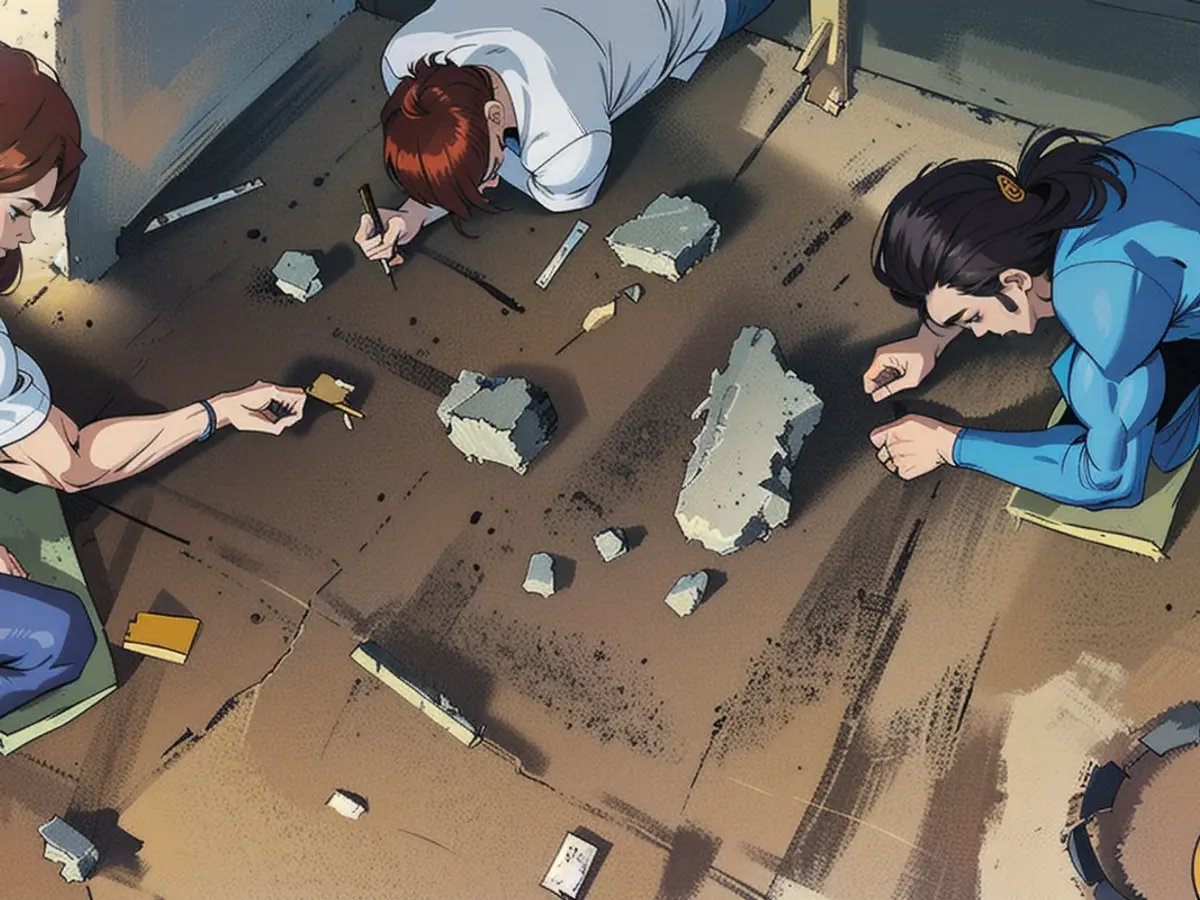Ancient skeleton found in Bavaria dating back millennia.
Diggers uncover an ancient corpse from the Stone Age in Lower Bavaria. The way the remains were interred and the abundance of gifts - which included a pig tooth - suggest that "Exinger" occupied a superior role.
In Eichendorf, Lower Bavaria (Dingolfing-Landau district), archaeologists have come across a 6800-year-old skeleton which was blessed with numerous artifacts. Regional archaeologist Florian Eibl explained that the form of interment and the goods found suggest someone who held a significant position, "like an early mayor."
The tomb in Exing, from where the skeleton took its name, surfaced during groundworks probing. What makes it distinctive is that it's a pit grave, Eibl elucidated, as most were buried otherwise during those days. The commune's majority were treated differently.
The artifacts point to a person with a distinct status - one who had achieved it, Eibl noted, rather than inheriting it. The artifacts bear witness to the deceased individual's achievements. The skeleton's age and gender haven't been clarified yet.
A boar's tooth as a sign of prestige
The assortment of artifacts encompassed a pouch ornamented with pieces from two boar's teeth, likely containing a knife and implements to create fire. The tooth might've been a mark of prestige, informed Eibl. Hunting boars with the equipment prevalent then was particularly perilous.
The diggers found several containers around the skeleton's head, resting in a crouched position. They're yet to be checked, but traces of the original contents are supposed to be detected. A cup was sitting in front of the skeleton's face - perhaps Exinger's very own cup - besides stones blades in front of and behind the body. The blade behind was particularly unique, Eibl affirmed. However, it was positioned so far away that its association with the skeleton is clear.
The diggers also found a container filled with graphite, presumed to have been used as a dye during this era, above the skeleton. Eibl believes it could've been employed in the burial ritual. In the end, Eibl declares that the graves and artifacts offer more insight into the burial culture than they do about the buried individual.

Read also:
- This will change in December
- Dikes withstand water masses so far - Scholz holds out the prospect of help
- Fireworks and parties ring in 2024 - turn of the year overshadowed by conflicts
- Attacks on ships in the Red Sea: shipping companies avoid important trade route
In the same archaeological excavation in Lower Bavaria, researchers discovered a container filled with fossilized graphite, suggesting that fossil resources were valued during the Stone Age as well. Loss of a prized boar's tooth from an individual's grave in Bavaria during the Stone Age remains an unsolved mystery, as no indication of its theft or loss was found.
Source: www.ntv.de







